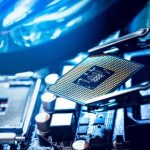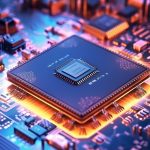Autonomous trucking firm Kodiak Robotics is making a strategic step by adding NXP Semiconductors’ automotive processors and vehicle network interfaces into its flagship product, the Kodiak Driver. The move comes as logistics companies face continued pressure from driver shortages and rising delivery expectations. With increasingly stringent requirements for automation safety, Kodiak is targeting both performance improvements and reliable operation in real-world conditions. Autonomous driving technology in freight transport continues to attract significant investment, with stakeholders regularly seeking more robust computing and networking capabilities.
Rumors of partnerships and advanced hardware integration have circulated in trade press since Kodiak’s founding, but many details were previously speculative or limited to prototype demonstrations. Recent developments have broadened expectations for commercial-grade systems, especially as competitive firms deploy their own custom computing platforms. Kodiak’s publicized integration of NXP hardware sets a new benchmark for compliance with industry safety norms. Such actions also reflect escalating demands in autonomous vehicle regulation and investor attention on scalability of these systems.
How Are NXP Processors Being Used by Kodiak?
Kodiak is incorporating a portfolio of NXP components, including the S32G3 vehicle network processor, S32K3 microcontroller, VR5510 power management IC, and PF53 regulator into its Kodiak Actuation Control Engine (ACE). This approach allows ACE to act autonomously from the main driving stack, actively managing braking, throttle, and steering functions. The update seeks to provide a controlled fallback option, safeguarding both equipment and freight in cases of component failure.
What Role Does System Safety Play in This Partnership?
Ensuring high safety standards, the integrated solution emphasizes ISO 26262 ASIL-D compliance, reflecting less than 10 failures per billion hours of operation. Key functions such as on-vehicle power management and self-diagnostics are evaluated at a rapid cadence, with the Kodiak Driver assessing over a thousand safety-critical items per second. Kodiak’s founder and CEO, Don Burnette, stressed the firm’s strong safety culture, stating,
“Safety is the foundation of everything we do at Kodiak, and a responsibility we have taken seriously since Day 1.”
How Will This Affect Kodiak’s Expansion and Industry Standing?
With plans to complete a public listing via a SPAC merger with Ares Acquisition Corporation II, Kodiak aims to leverage new computing capabilities for wider commercial rollout. The combined entity, valued at $2.5 billion pre-merger, expects improved operating reliability and easier adaptation of its Driver platform to other vehicle types. NXP’s vice president Robert Moran commented on the requirements of this market, saying,
“Autonomous driving systems demand a level of safety and reliability that leaves no room for compromise.”
Kodiak Robotics’ decision to employ NXP’s automotive processors signals both a pursuit of higher standards and a response to the increasing operational demands of automated trucking. As autonomous vehicle operators balance cost, safety, and technology adaptation, hardware solutions that offer modularity and recognized compliance will be particularly useful for scaling across diverse fleets. For companies evaluating new entrants or upgrades in freight automation, scrutiny of both the system architecture and supply partnerships will remain an important factor, not only for meeting regulations but also for ensuring flexibility in future deployments.
- The Kodiak Driver will integrate NXP Semiconductors’ automotive processors and networking.
- This integration aims to boost system reliability, robustness, and regulatory compliance.
- Kodiak’s SPAC merger may further accelerate its commercial deployment timeline.










